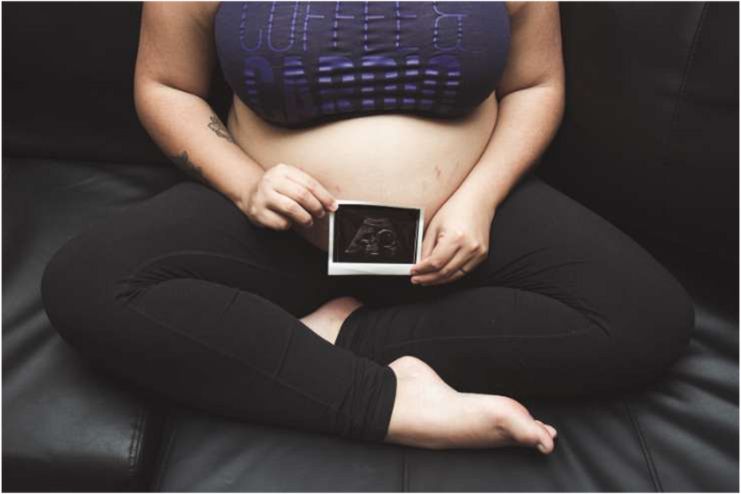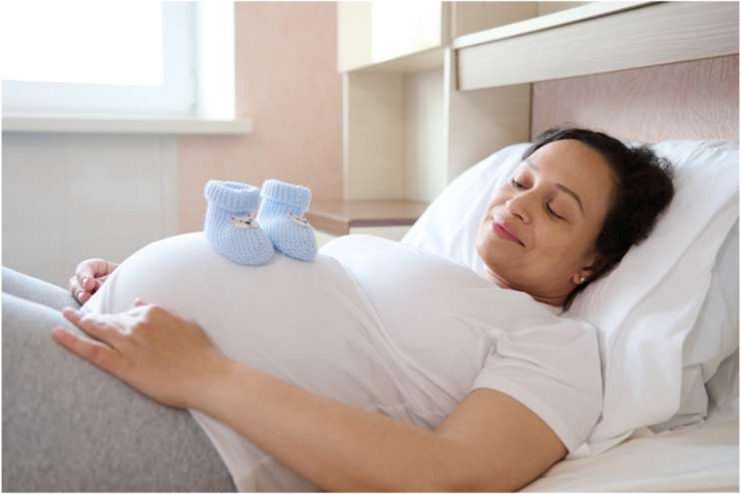AI Contribution
At HealthSpectra, we may use AI to refine grammar and structure, but every piece is shaped, checked, and approved by real people, our expert writers and editors, to ensure clarity, credibility, and care. Learn more..Affiliate Disclaimer
Some links in this article are affiliate links. We may earn a small commission if you make a purchase through these links, at no extra cost to you. We only recommend products we find useful to our readersThe incredible pregnancy journey is divided into three trimesters, each lasting roughly 40 weeks. Every trimester represents a distinct life narrative chapter, combining excellent turning points with life-altering transformations.
This section is about comprehending how a tiny spark of life develops into a fully formed human being, not merely about keeping count of weeks.
Life begins in the first trimester when a single cell develops into an intricate being with developing limbs and a beating heart. Often referred to as the “golden period,” the second trimester is when the baby starts to move, and expectant parents have their first real bond with their developing child.
The third trimester is the last stage, during which the infant develops the systems and strength necessary for life outside the womb. In addition to serving as time markers, these trimesters provide a greater understanding of the delicate process of life’s evolution and are a monument to the wonders of human creation.
First Trimester: Early Developments

The first twelve weeks of pregnancy, or the first trimester, is a critical period for the development of the fetus. Your baby’s organs and bodily structure develop throughout this time.
During conception, the sperm and egg unite to create a zygote, which implants in the uterine wall. The zygote’s cells divide and expand to form an embryo.
Significant changes will also occur in your body, and you can experience breast tenderness, exhaustion, nausea, and frequent urination. Although these symptoms are typical, each woman’s experience is different.
4 weeks: During this roughly six-week period, all of the body’s major organs and structures start to grow.
5 weeks: The baby’s heart starts beating, usually twice as quickly as an adult’s.
6 weeks: Little buds for the limbs and legs begin to grow, and facial features start to shape.
10 weeks: The embryo formally transforms into a fetus. Fingernails and toenails begin to form, and organs such as the kidneys, intestines, brain, and liver start to function.
12 weeks: During a prenatal exam, you should be able to hear the baby’s heartbeat, though an ultrasound may have previously done so.
Second Trimester: Growth and Discoveries

The second trimester of pregnancy is typically simpler for most women than the first. However, keeping yourself updated on your pregnancy during these months is equally crucial.
You may observe that symptoms such as weariness and nausea are decreasing. However, your body is currently undergoing other, more noticeable changes. As the baby grows, your belly will get bigger. Additionally, your baby will start moving before this trimester ends!
14 weeks: The baby’s kidneys produce urine and discharge it into the amniotic fluid. The infant may start sucking their thumb and is capable of making facial expressions.
16 weeks: A mid-pregnancy ultrasound, which is often performed between 16 and 20 weeks during pregnancy, may reveal the gender of the unborn child.
18 weeks: You probably will feel the baby moving around in the womb if you haven’t already. Other people should be able to sense your baby’s movements outside your tummy within a few weeks.
23 weeks: The infant’s hearing is improving, and their sense of motion has grown.
24 weeks: The brain and hair should overgrow, and taste buds begin forming. The infant could be over a foot long and weigh over a pound.
27 weeks: The baby’s lungs are proliferating, even though they won’t be able to function for a few more weeks. In addition to breathing in and out amniotic fluid, the infant will have started to sleep and wake up regularly.
Third Trimester: Final Preparations

During the third trimester, try to maintain an active lifestyle. Braxton-Hicks contractions, which are the uterus’s way of getting ready for birth, may cause you to feel a little constricted. To prevent difficulties, you will undergo more frequent examinations.
The home stretch of your pregnancy is almost here, and you are undoubtedly eager and nervous for your baby’s arrival. The following are a few physical symptoms you might have during this time:
28–32 weeks: The infant will have eyelashes and better vision and may start to dream. Along with growing fingernails and toenails, the baby may begin to gain weight, reaching over three pounds and almost four.
34 weeks: The baby’s skin is getting softer and smoother while their lungs and central nervous system are still developing.
37 weeks: At this point, your baby is deemed “early term.” Although babies born at this time typically do well, waiting a few more weeks for delivery is preferable to give the brain and lungs time to develop fully.
39 weeks: The baby is deemed full-term and prepared for delivery. The average length is about 20 inches, and the average weight is about 7.5 pounds.
41 weeks: Your due date has passed, so experts now deem the baby “late-term.” “Post-term” means anything after 42 weeks. Doctors may perform tests to check the health of the unborn child, and you and your doctor may discuss bringing on labor to prevent difficulties.
After Giving Birth
Even while your primary emphasis will naturally be on the baby, it’s important to continue caring for yourself throughout what some women call the “fourth trimester,” which is the time after pregnancy. Various hormonal and environmental changes might provide difficulties, even though this can be exciting. These difficulties could include:
- Coping with lochia is a tissue and blood discharge lasting a few weeks.
- Cramping, particularly when nursing, could resemble period cramps.
- Becoming accustomed to the new role of motherhood.
- Gaining new abilities.
- Experiencing breast pain and other breastfeeding-related issues.
- Experiencing exhaustion as a result of sleep deprivation and other causes.
- Postpartum depression can occur in certain situations.
Conclusion
Each stage of pregnancy creates a distinct movement in the life journey, making pregnancy a symphony of growth and transition. Navigating pregnancy difficulties requires understanding these trimester-specific changes, which also serve as a guide for the trip. By recognizing the milestones, expectant parents can feel more at ease and empowered during the amazing experience of bringing a child into the world. It also helps ensure better healthcare management.
References
- https://reverehealth.com/live-better/pregnancy-milestones-trimester/
- https://www.betterhealth.vic.gov.au/health/healthyliving/pregnancy-stages-and-changes
- https://maternity.jacksonhealth.org/pregnancy-milestones/first-second-third-trimester/
- https://www.medicalnewstoday.com/articles/323742#summary
- https://womenshealth.gov/pregnancy/youre-pregnant-now-what/stages-pregnancy
In this Article






















